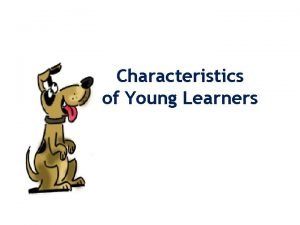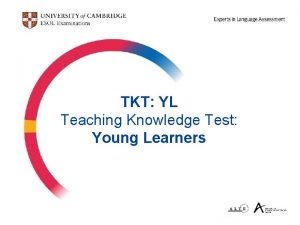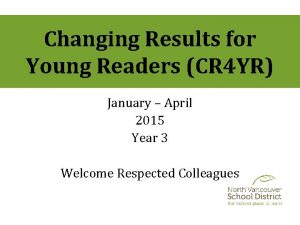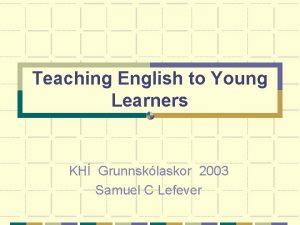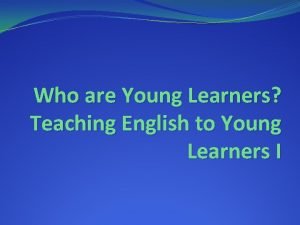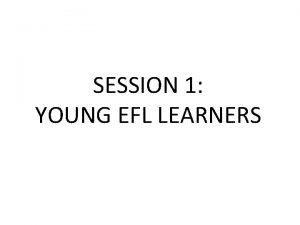Teaching English to Young Learners KH Grunnsklaskor 2002







- Slides: 7

Teaching English to Young Learners KHÍ Grunnskólaskor 2002 Samuel C Lefever

Why teach English at the primary level? increased use of and exposure to English in daily life – practical need exposes children to understanding of foreign cultures – tolerance links communication to the understanding of new concepts the earlier you start the more time you get to learn the language stimulates language awareness – benefitting both L 1 and L 2

Are children better language learners? the brain is more adaptable before puberty than after – L 2 acquisition is possible without interference from self-consciousness children have fewer negative attitudes to foreign languages and cultures – more open for learning languages children’s language learning is more closely integrated with real communication – depends more on the immediate physical environment

Are children better language learners? children are less conscious of learning English as a “school subject” – learning comes more naturally children devote more time to language learning Conclusion: beginning at an early age can give advantages; it need not do any harm – given the availability of trained teachers and the use of appropriate materials

Characteristics of young learners (8 -10 years old) keen and enthusiastic – motivated curious and inquisitive outspoken – clear views learning can be closely linked to the development of ideas and concepts rely on spoken word as well as the physical world to convey and understand meaning

Characteristics of young learners learn by doing/hands-on experience (physical movement and activity necessary to stimulate thinking – understanding comes through hands, eyes, and ears) a sense of fairness – can work with and learn from others have some sort of language awareness and readiness

Implications for teaching words are not enough play with the language develop the awareness of language variety in the classroom routines and repetition cooperation not competition grammar is absorbed – student-directed assessment and encouragement


